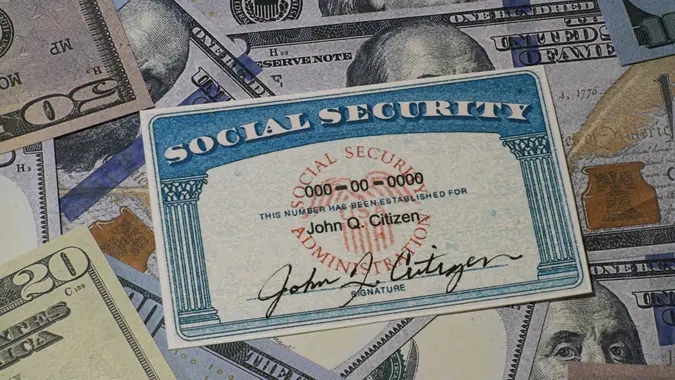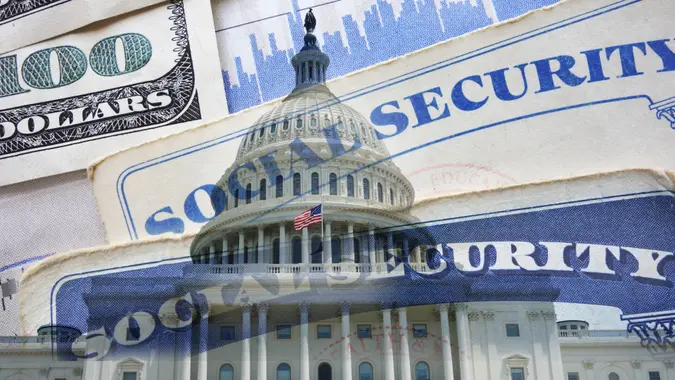5 Things You Still May Not Be Able To Afford, Even With the 2026 Social Security COLA

Commitment to Our Readers
GOBankingRates' editorial team is committed to bringing you unbiased reviews and information. We use data-driven methodologies to evaluate financial products and services - our reviews and ratings are not influenced by advertisers. You can read more about our editorial guidelines and our products and services review methodology.

20 Years
Helping You Live Richer

Reviewed
by Experts

Trusted by
Millions of Readers
For those relying on Social Security as a primary source of income, the annual cost-of-living adjustment (COLA) can help counter rising prices for common purchases. However, the COLA is based on any inflation in the third quarter of the current year versus the previous year, as reflected in the Consumer Price Index for Urban Wage Earners (CPI-W). Yet that index doesn’t always reflect the on-the-ground reality for seniors, as some categories rise faster than this broad inflationary gauge.
Currently, the Senior Citizens League (TSCL) projects that the COLA for 2026 will be 2.7%. However, TSCL argues, certain categories like housing and medical care, which seniors typically spend a higher proportion of their income on than urban workers, and those areas sometimes see higher inflation rates. Altogether, even with COLAs, the average Social Security payment has lost an estimated 20% of its buying power since 2010, according to TSCL.
A similar trend could play out next year, especially if more tariffs get priced in. So far, companies have absorbed the bulk of tariff-related price increases, but it’s possible that those costs will increasingly shift to consumers.
That, combined with already existing inflation, could make more purchases unaffordable for seniors, such as in the following areas.
Utility Bills
While gas prices at the pump are down since last year, some other types of energy costs have been on the rise. On an unadjusted basis, electricity prices increased 5.5% from July 2024 to July 2025, and utility piped gas jumped by 13.8%, according to the latest Bureau of Labor Statistics (BLS) data. Issues such as aging grid infrastructure have contributed to costs, and tariffs on imported energy could also keep prices high.
Cars
The latest BLS inflation data show a 4.8% annual increase in used vehicle prices on an unadjusted basis, potentially due to demand for used cars amid relatively high prices for new vehicles.
Granted, new car prices are only up 0.4% over the past year. But considering the average MSRP is over $50,000, according to Kelley Blue Book, many buyers are already priced out. These trends could accelerate in 2026 as tariffs work their way through supply chains, and if manufacturers find they can not absorb the baseline 25% tariff on imported autos.
Dental Services
Medical services overall have experienced hot inflation, but dental services are worth noting in particular, as these are typically not covered by Medicare. So, seniors may face difficulties affording rising prices for routine dental care. Overall, dental services prices increased by 4.8% annually on an unadjusted basis, according to the latest BLS data.
Coffee
For many people, coffee is about as close to a necessity as it gets, despite technically being a discretionary purchase. Yet prices are getting high, and many seniors may find that they have to trade down to a lower-cost brand or skip some purchases entirely to stay on budget.
On an unadjusted basis, coffee prices are up 14.5% annually, according to the latest BLS data. Considering that over 99% of coffee in the U.S. is imported, according to the National Coffee Association, tariffs could keep prices elevated in 2026.
Shoes
Lastly, shoes are another technically discretionary category, but they’re staples in daily life. Seniors might benefit from buying new shoes more often than others to ensure they have the physical support they need to stay active.
Granted, footwear inflation only rose by 0.9% over the past year on an unadjusted basis, according to the latest BLS data. But that might not last for long. Nike, for example, said in its June earnings call that it will implement “surgical” price increases in the U.S. starting this fall. The CEO of Brooks Running also told CNBC recently that tariffs are a “significant math problem” for the company and there will be “slight price increases” due to tariffs in 2026.
So, even if companies can absorb some of these price increases, seniors may not be able to shell out for anything more, especially if they’re pressured in areas like higher medical costs. Instead, many seniors might decide to wear out their old shoes longer or trade down for discount options.
More From GOBankingRates
- Nearly 1 in 3 Americans Hit by a Costly Holiday Scam, Norton Survey Shows -- How To Avoid This
- Here's What the Average Social Security Payment Will Be in Winter 2025
- How Middle-Class Earners Are Quietly Becoming Millionaires -- and How You Can, Too
- The Easiest Way to Score $250 for Things You Already Do
 Written by
Written by  Edited by
Edited by 

























